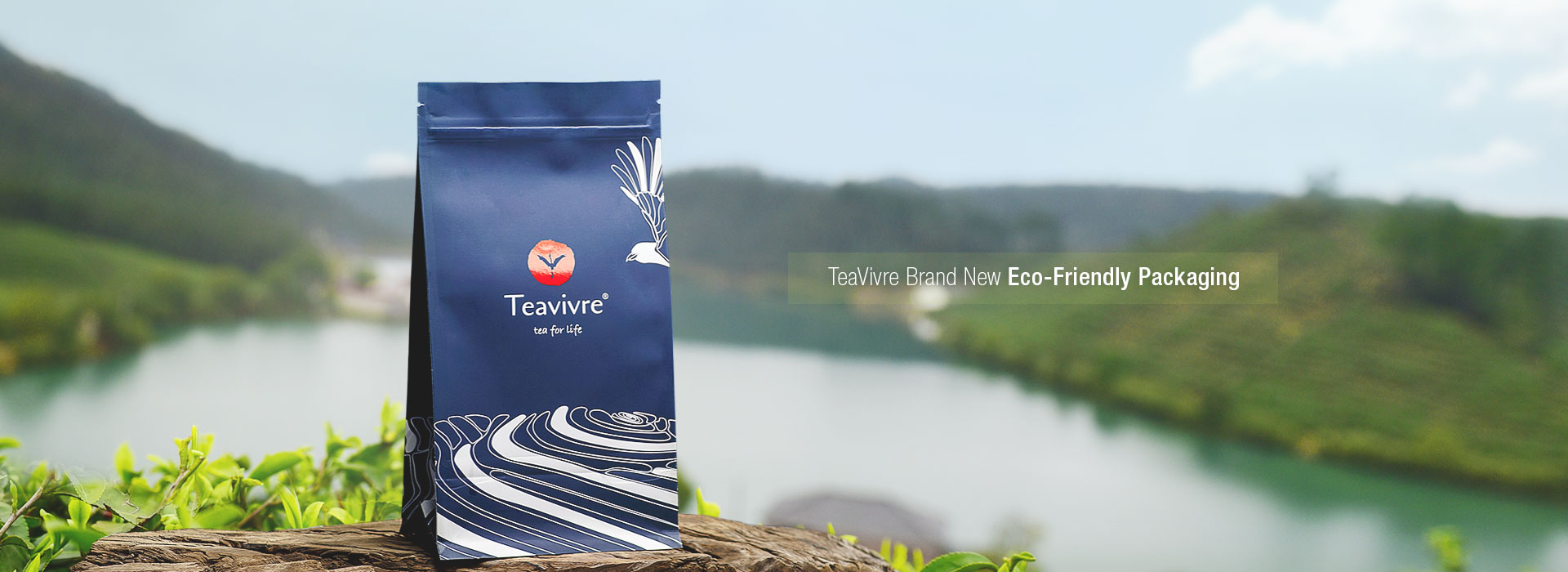The Reading Guide
- Part 1: Plastics Packaging Waste to Environment
- Part 2: TeaVivre Packaging Innovation – New Design
- Part 3: Material of TeaVivre New Packaging
Plastics Packaging Waste to Environment
Plastics play a major part in our current environmental issues. The impact of plastic packaging on the environment is huge. The amount of packaging waste that’s left behind is a serious threat to our environment.
Too much plastic packaging waste for environment
Since we engaged in tea field in 2011, we use double packaging (inner bag and outer zip bag) to keep tea for better storage. In the past years, we got both positive feedback (most customers like the double packaging which is convenient and good way to store tea) and negative feedback (some customer said it is not good for environment as there would be much plastic waste).
To minimize the negative effects of packaging on the environment, we need to reduce packaging waste and make eco-friendly packaging to environment.
TeaVivre Packaging Innovation
Reducing plastic waste is already high on our agendas. From the beginning of 2019, we plan to change the packaging design and also find solution for the packaging that can be better for environment.
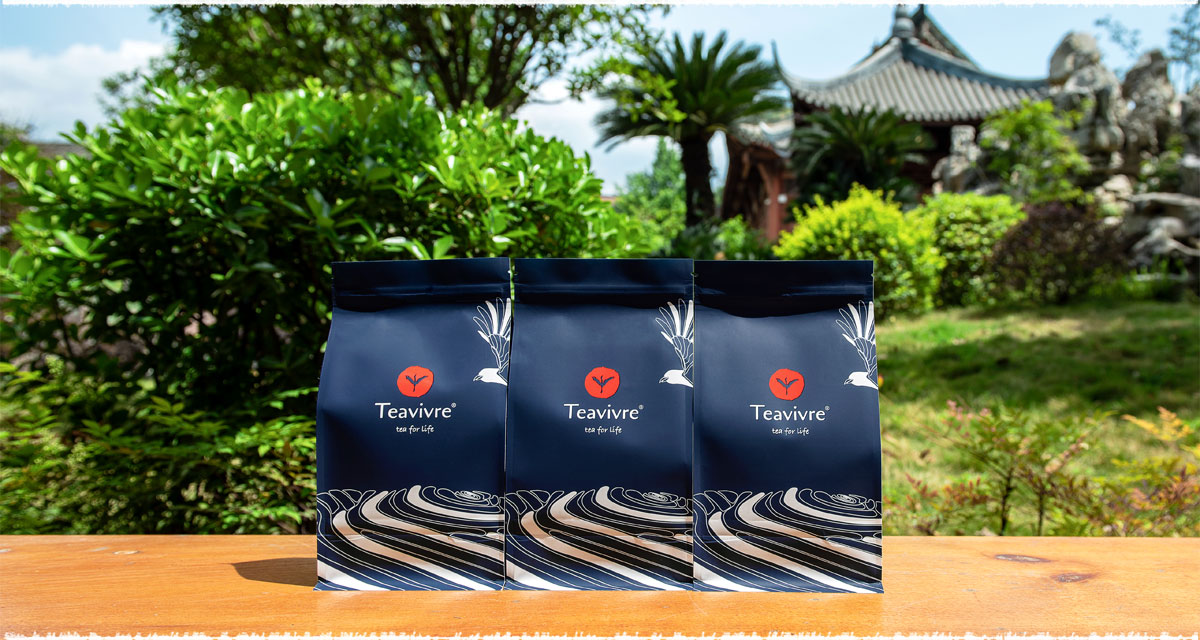

1. Brand New Design
The main idea of this concept was to visually describe in a unique, meaningful way the natural environment where one of the finest tea of the world grows.
The deep blue dark background is creating a modern contrast with the white line illustrations – this gives the entire package a subtle elegant style
The rolling tea mountains and the deep blue sky that smoothly covers the ground are being
reinterpreted and transformed in this simple, organic structure. The illustrations are hand-drawn in a clean, white organic, natural style while bringing the attention to nature, to simplicity. They are visually inviting the customer to travel in a tea garden and enjoy this relaxing, peaceful experience.
The logo is positioned in the upper part of the front view of the package to dominate and give the illusion of flowing over the land.
For emphasizing this effect a flying bird is accompanying the entire composition. The bird – Like inspiration was also used the beautiful flight of a bird, the symbol of purity, of serenity, of sun & joy of life.

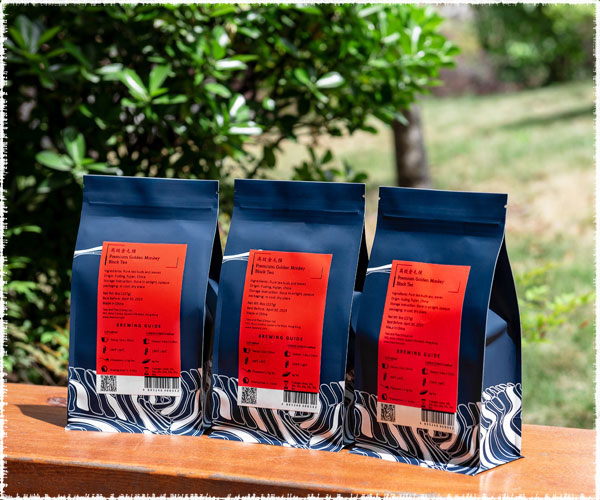
2. Provide Bulk Packaging and single packaging to cut down on packaging
We will use this outer eco-friendly single packaging to pack the tea and cancel the original inner bag, which will cut down on packaging.
At the beginning, this new packaging will only be used in some teas and we will gradually replace all the old packaging with the new packaging.
Please choose this new packaging option at product page (you need to deselect the current option first, then it is possible to select the Eco-Friendly Packaging)


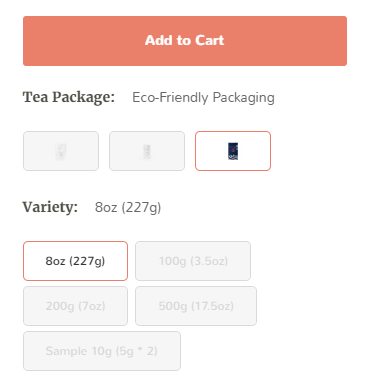
3. Use Biodegradable material to make it eco-friendly
Add BDP material that can accelerate the biodegradation of plastics in microbe-rich, biologically active environments. i.e. Landfills, anaerobic compost.
4. Video Tutorial of our Eco-Friendly Packaging
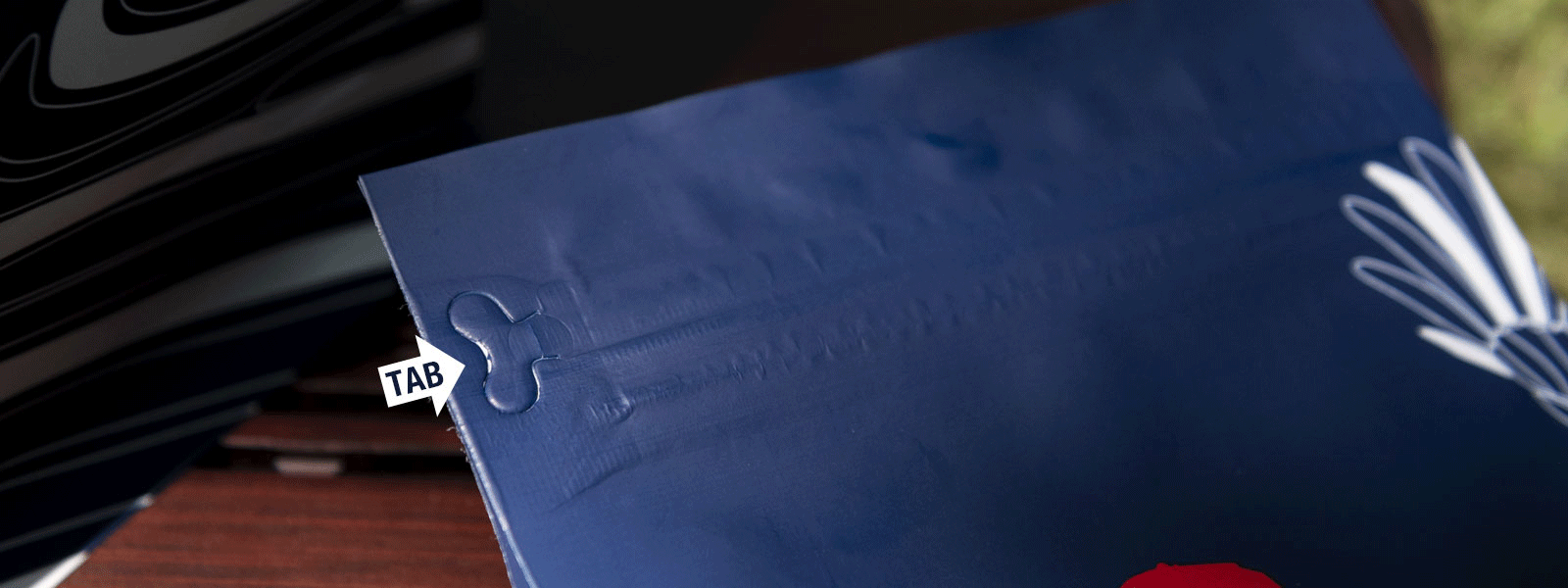

Material of TeaVivre New Packaging – PET + BDP + Kraft Paper
Our new packaging is made by adding BDP to PET plastic, Lined with Kraft Paper.
BDP is an organic biodegradation enhancing ingredient that is added into the plastic during
manufacturing. Once the treated products enter landfills, soil and oceans, it attracts microbes to fully consume the plastic. BDP can be used in most plastics, synthetic fabric & yarn, rubber and foam. All the previous properties remain the same.
Traditional plastics can take thousands of years to biodegrade. Just 1% of BDP added into plastics can enhance biodegradation in an anaerobic environment, degrading into carbon dioxide, methane, and organic decay.
Adding 1% of this substance (BDP) in the plastic production process, this plastic product can achieve full degradation of the plastic in an anaerobic environment, degrading into carbon dioxide, methane, and organic decay.
Comply with ASTM D5511, GB 9685-2016, FDA, GRAS / EU standards
Until the industrial waste treatment process (microbes present in the garbage dump), the integrity and shelf life of the plastic will not be affected.
 Exploring the Charms of 2024 Spring Tea Garden with Angel
Exploring the Charms of 2024 Spring Tea Garden with Angel Yingde Black Tea
Yingde Black Tea Matcha vs. Green Tea Powder
Matcha vs. Green Tea Powder
